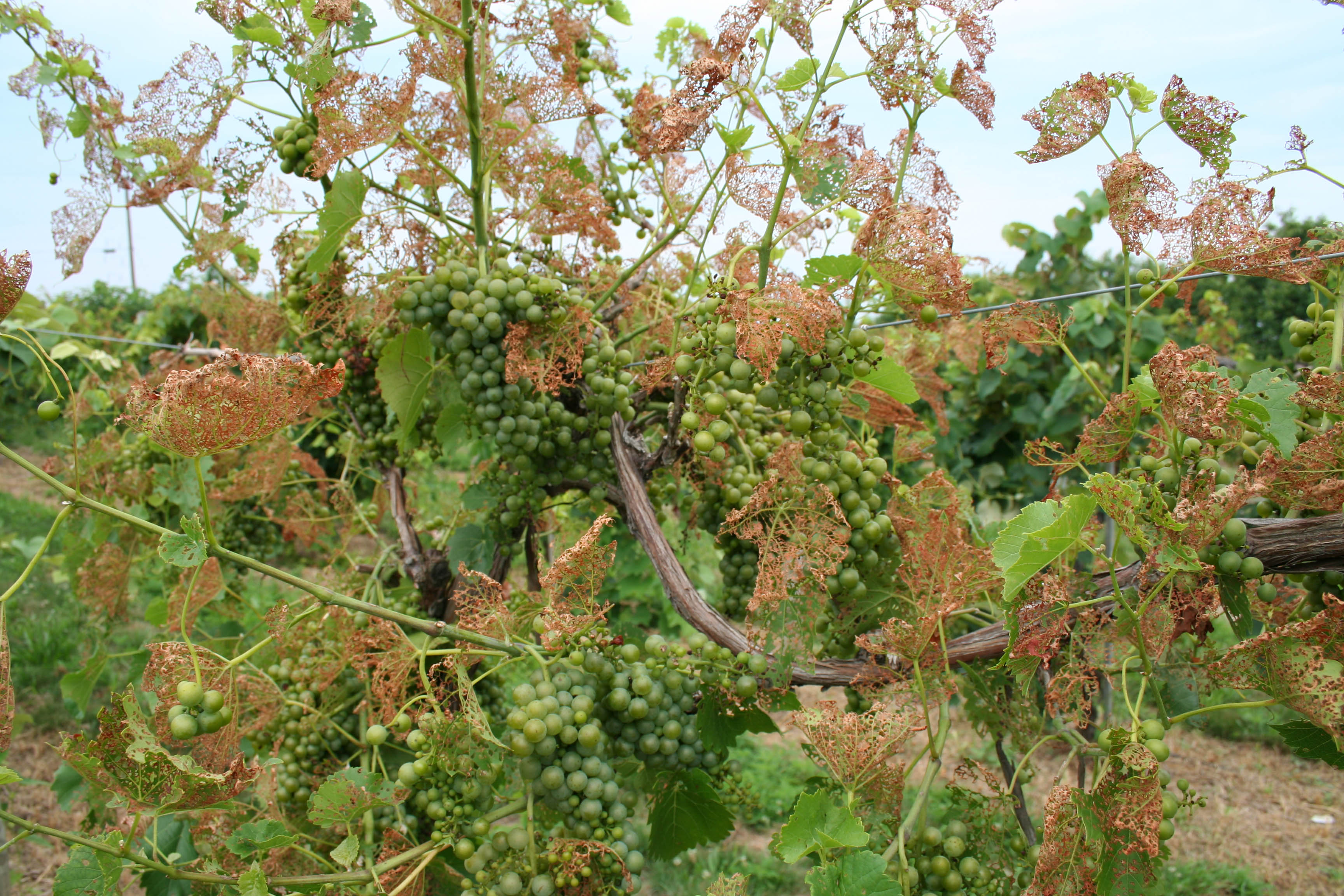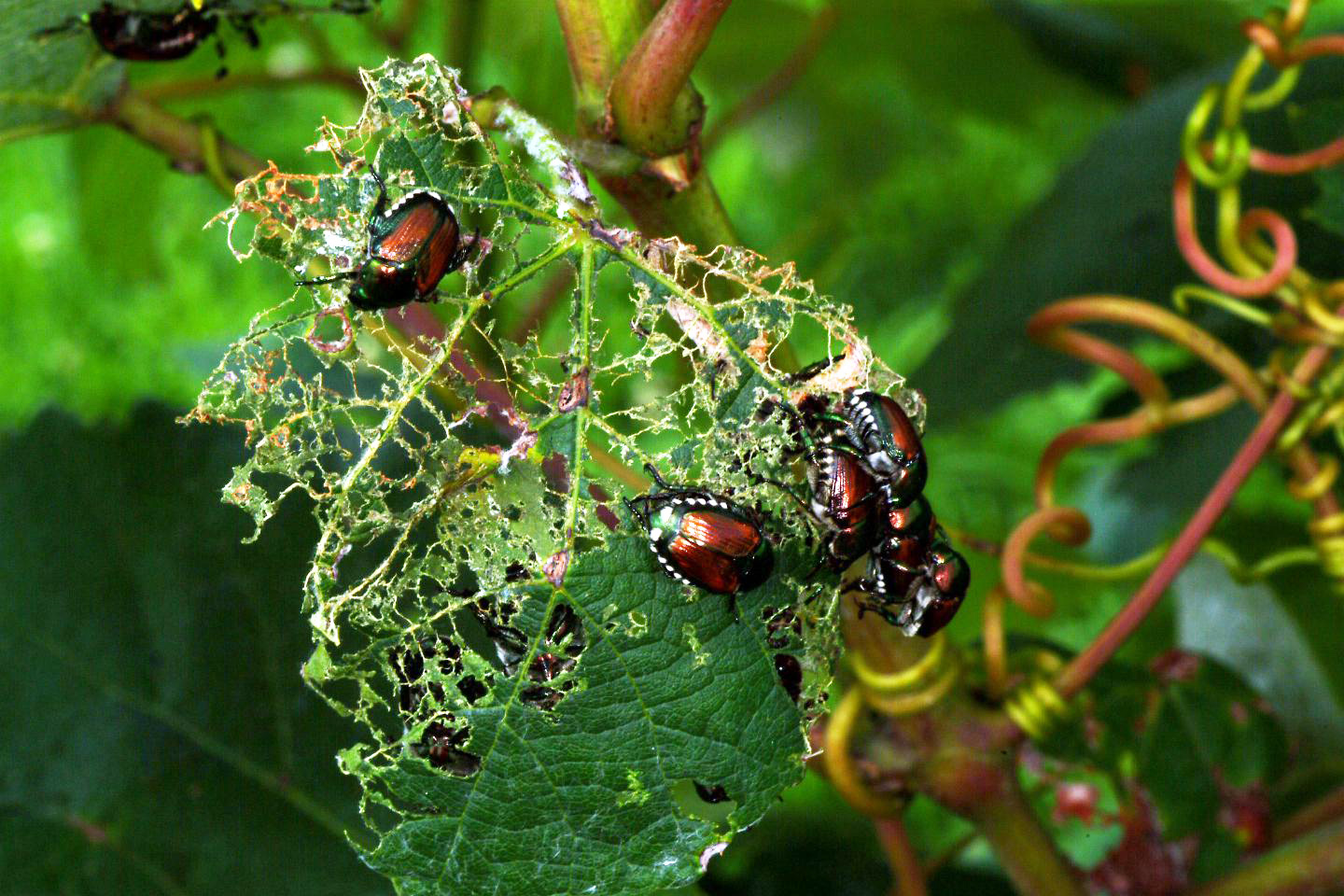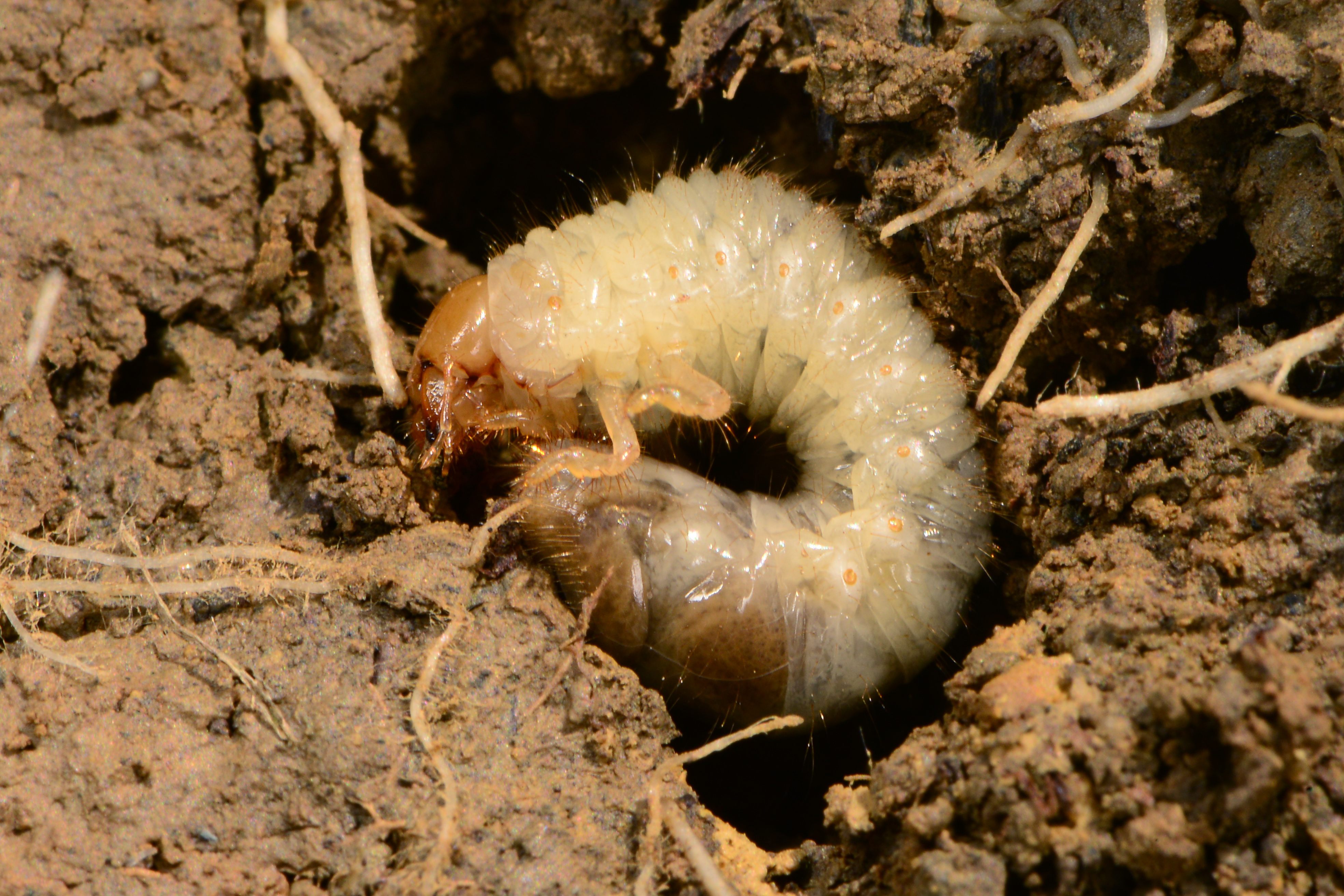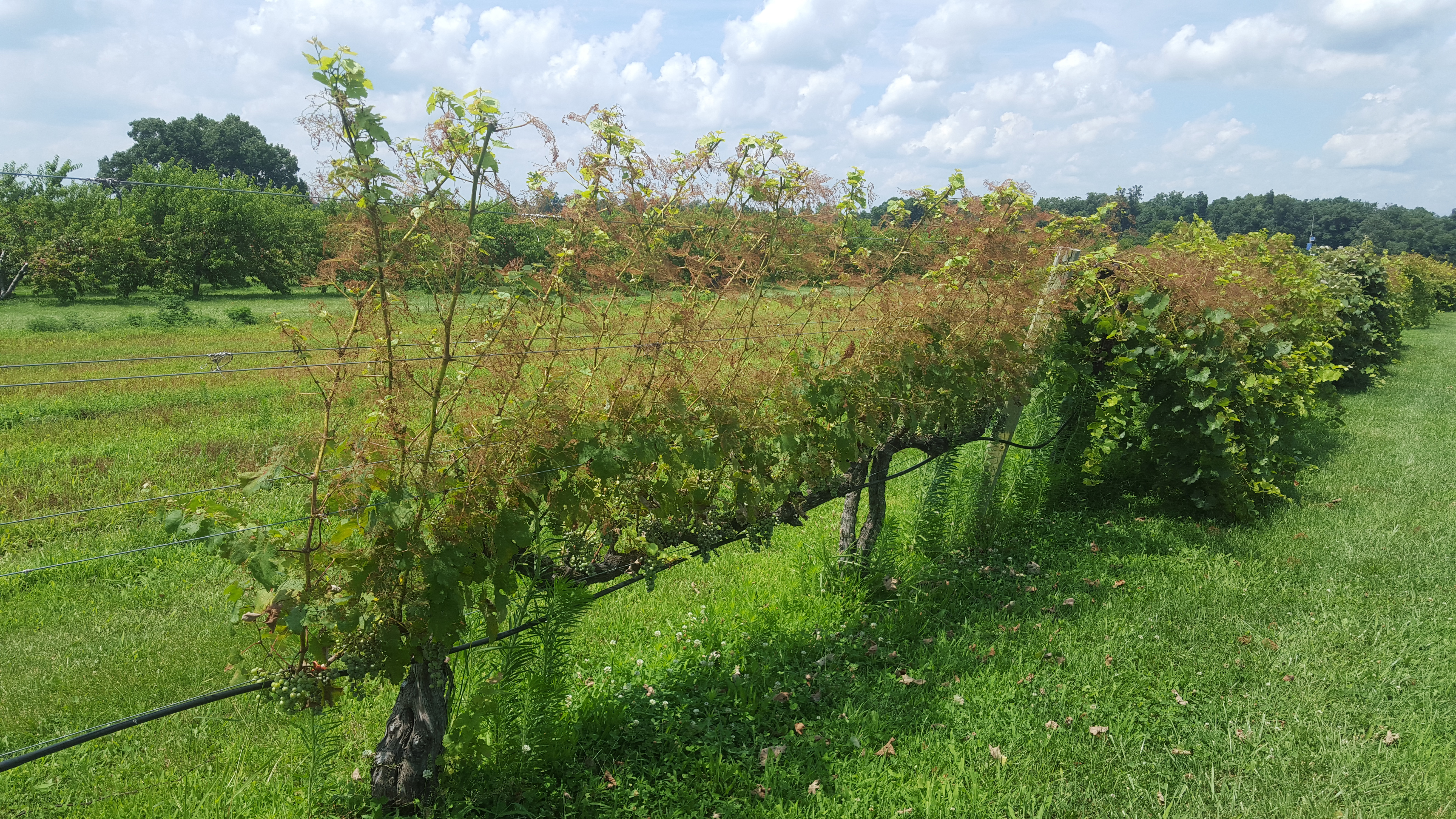Japanese Beetle on Grapes
Return to Insect Pests
Japanese beetle (Popillia japonica) is highly attracted to grape leaves and is a serious pest during some years. Adults are 3⁄8-inch-long metallic green beetles with copper-brown wing covers. Five small white tufts of hairs project from underneath wing covers at the tip of their abdomen. Mature larvae, which feed on roots of grasses, are crescent-shaped grubs about 1 inch long with a brown head and grayishblack end. Hairs on the last segment (raster) form a V-shaped pattern near the anal opening of grubs. Feeding on leaf tissue between large veins results in skeletonized leaves. Beetle feeding begins on upper leaves and can be more severe with some thin-leaved varieties. Damaged leaves release volatile chemicals, which attract more Japanese beetles. Japanese beetle damage to berries can attract green June beetle and result in additional damage.

Japanese beetle damage.
(Photo: John Strang, University of Kentucky)

Japanese beetle feeding damage to grape leaves.
(Photo: Ric Bessin, University of Kentucky)

Japanese beetle damage to berries.
(Photo: Ric Bessin, University of Kentucky)

Japanese beetle grub.
(Photo: Ric Bessin, University of Kentucky)

Grape cultivars vary in attractiveness to Japanese beetle; note the difference in grapevines in the foreground compared to those in background.
(Photo: Ric Bessin, University of Kentucky)
Management:
- Avoid use of Japanese beetle traps, as these generally attract more beetles and result in increased damage to plantings.
- Controlling grubs in the soil has little effect on adult management.
- Apply foliar insecticides mid-season.
